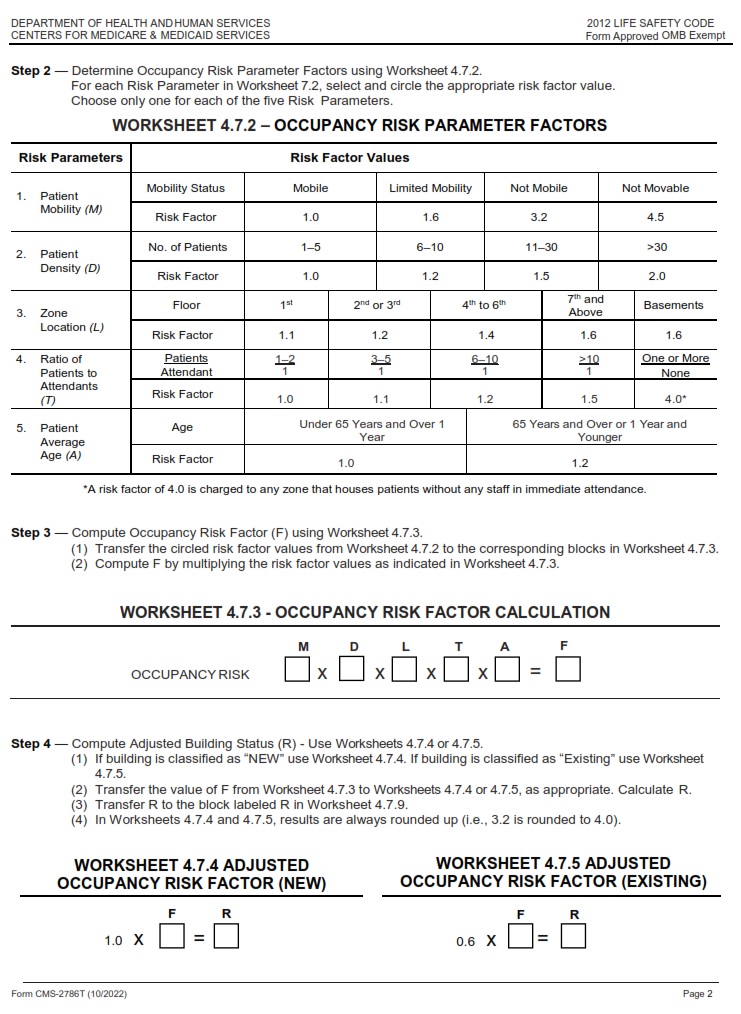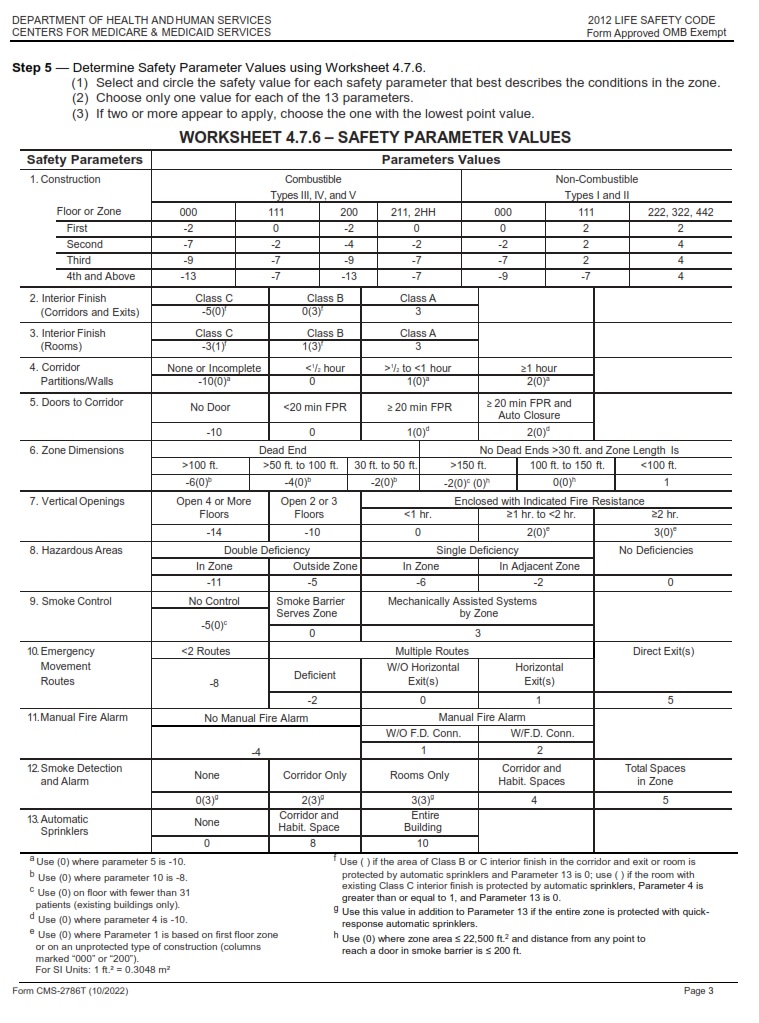CMSFORM.ORG – CMS 2786T – Fire Safety Evaluation System – Health Care 2012 Life Safety Code – The safety of patients, staff, and visitors is a top priority in any healthcare facility. To ensure that these facilities are up to standard, the Centers for Medicare & Medicaid Services (CMS) has implemented the Fire Safety Evaluation System (FSES). This system evaluates healthcare facilities’ compliance with the 2012 edition of the National Fire Protection Association’s Life Safety Code.
One important aspect of this evaluation process is CMS Form 2786T. This form is used by surveyors to document deficiencies and noncompliance issues related to fire safety in healthcare facilities. Understanding this form and its implications is crucial for ensuring that your facility passes its FSES evaluation and maintains a safe environment for all those who enter its doors.
Download CMS 2786T – Fire Safety Evaluation System – Health Care 2012 Life Safety Code
| Form Number | CMS 2786T |
| Form Title | Fire Safety Evaluation System – Health Care 2012 Life Safety Code |
| Published | 2022-10-01 |
| O.M.B. | Exempt |
| File Size | 527 kb |
CMS 2786T - Fire Safety Evaluation System - Health Care 2012 Life Safety Code (2314 downloads )
What is a CMS 2786T?
CMS 2786T is a document that outlines the fire safety evaluation system for healthcare facilities. This system was developed to comply with the Health Care 2012 Life Safety Code, which sets standards for fire protection and life safety in healthcare settings. The CMS 2786T form is used by surveyors during inspections of healthcare facilities to assess their compliance with these standards.
The CMS 2786T form covers a range of topics related to fire safety, including means of egress, sprinkler systems, smoke barriers, and emergency lighting. It also includes sections on hazardous areas such as kitchens and storage rooms where flammable materials are present. The goal of this form is to ensure that healthcare facilities provide a safe environment for patients, staff, and visitors in the event of a fire or other emergency.
In summary, the CMS 2786T form is an important tool used by surveyors to evaluate fire safety in healthcare facilities. Compliance with its guidelines helps ensure that these facilities meet the highest standards for protecting patients and staff from harm in case of emergencies such as fires.
Where Can I Find a CMS 2786T?
If you’re searching for a CMS 2786T Fire Safety Evaluation System, there are a few ways to go about finding one. One option is to contact the Centers for Medicare & Medicaid Services (CMS) directly and request a copy of the form. Another way is to visit their website and search for the form under their Forms section.
Additionally, you can reach out to healthcare organizations or facilities that have already completed the Fire Safety Evaluation System and request a copy from them. They may be willing to share it with you or point you in the right direction.
It’s important to note that the CMS 2786T form is specific to healthcare facilities and pertains to compliance with the 2012 Life Safety Code. Therefore, any copies or versions obtained must be up-to-date and applicable to your particular facility’s needs.
CMS 2786T – Fire Safety Evaluation System – Health Care 2012 Life Safety Code
The CMS 2786T is a fire safety evaluation system that aims to maintain the safety of healthcare facilities according to the Health Care 2012 Life Safety Code. The code outlines specific requirements for construction, protection, and operational features of buildings to minimize danger from fire, smoke, and toxic fumes.
In addition to ensuring that every facility complies with specific codes related to fire safety, the evaluation system also emphasizes prevention through regular inspections and training programs for staff members. It helps healthcare providers identify potential hazards before they occur by requiring them to perform periodic assessments of their premises.
The implementation of CMS 2786T has helped healthcare providers create a safer environment for patients and staff alike. The system ensures that all necessary measures are taken in terms of construction and maintenance practices while also emphasizing prevention through regular training sessions. With this evaluation system in place, healthcare facilities can continue providing top-quality services without having to worry about potential disasters caused by fires or other emergencies.


